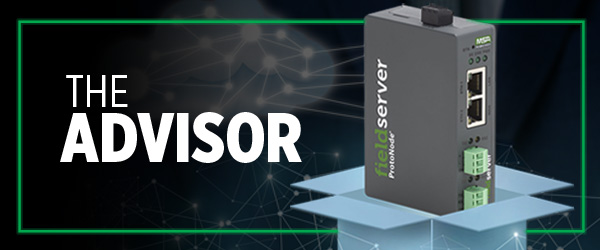
From smart homes and wearable tech to industrial automation and energy grids, connected devices are everywhere. Behind the scenes, many of these systems rely on MQTT, a messaging protocol that’s quickly becoming the go-to messaging protocol for connected devices.
We’ve had MQTT on our FieldServer BACnet IoT Gateway for many years and are working to extend MQTT to other products.

Sign up for our newsletter to stay informed about new releases.
SIGN UP TODAYBut what is MQTT and, more importantly, why does it matter?
Keep reading to learn more about what MQTT is, why it matters, and how it’s shaping the future of device communication.
What Is MQTT?
MQTT stands for Message Queuing Telemetry Transport. MQTT is a lightweight protocol that works on what is known as a publish-subscribe model. Initially developed in the late 1990s for oil pipeline monitoring over unreliable satellite networks, MQTT was designed to be efficient, fast, and flexible, and has since evolved into a protocol of choice for IoT developers.
At its core, MQTT allows devices to publish data to a central broker, which then distributes that data to any devices or systems that have subscribed to receive it. Think of it like a group text for machines, but with rules that ensure everyone gets the message (even if they lose connection).
Why MQTT?
Imagine a group of coworkers around a giant conference table with a stack of toy building blocks piled in the center. As a team, the goal is to build a cool castle. Each team member is tasked with building only one part of the castle. The catch? Everyone must take a portion of the tiny blocks back to their desks and create their part of the masterpiece.
But how can everyone ensure their part fits with everyone else’s when they’re done?
Simple: Connection and communication.
One obvious solution is for the team to share insights and information about what they’re doing.
That’s what MQTT is like. Think of it as a go-between or broker; something that takes all the messages from the group collective and ensures that the right message gets to the right person or group at the right time, without mixing them up. This way, everyone can know what everyone else is doing and, in the end, all the individual parts fit together.
Why Is MQTT Trending Now?
The short answer: it’s the right tool at the right time.
The longer one: MQTT is widely recognized for being a small-format communication protocol, that enables the efficient transmission of data between embedded devices and sensors and the rest of the enterprise.
Here’s what’s driving MQTT’s popularity:
1. Explosion of Connected Devices
From industrial machines and building sensors to consumer wearables and electric vehicles, the number of devices needing to share data has skyrocketed. MQTT is lightweight enough to work on tiny chips with minimal memory, yet powerful enough to support cloud-scale applications.
2. Demand for Real-Time Insights
From factory floors to life safety systems, operators need data as soon as possible. Because when temperatures spikes or a fire alarm panel is triggered, time is of the essence. MQTT is lightweight with low latency, which means it moves information fast—when and where it’s needed.
3. Bandwidth Barriers
Not every device has the luxury of strong Wi-Fi or constant cloud access. In remote, rugged, or unstaffed environments, network strength can vary, so every byte of data matters. Because MQTT keeps communication efficient, MQTT is ideal when bandwidth is tight, but reliability can’t be compromised.
4. Cloud Integration
MQTT plays nicely with cloud services like AWS, Azure, and Google Cloud. Many IoT platforms offer built-in MQTT support, too, which simplifies setup to get things up and running quickly.
What Makes MQTT So Useful?
MQTT has overtaken HTTP as the most used protocol for IoT devices on the internet. MQTT is also the primary protocol for all the major IoT platforms, including IBM, Amazon, and Microsoft.
Here’s why:
- Efficient Data Exchange: MQTT facilitates seamless communication, which is crucial for enterprises needing the right topic-based message to be delivered to the right person at the right time.
- Reliable Message Delivery: MQTT ensures that data sent is also data received, even amidst insecure or tenuous connections, such as cellular. MQTT facilities both data sharing, as well as device management and control.
- Scalable Solutions: MQTT easily scales up or down, thanks to its ability to connect to one or thousands of devices.
- Security Support: MQTT supports TLS/SSL encryption and authentication mechanisms. In addition, with an MQTT broker, there’s a central go-between, which means there’s only one open yet secure port instead of many.
MQTT in the Real World: DOs and DON’Ts for System Integrators
MQTT is a lightweight yet powerful protocol. The inclusion of MQTT within FieldServer gateway solutions helps make integration into third-party systems easier. Here are some DOs and DON’Ts to help ensure seamless, secure connections.
DO define requirements/parameters.
Identify specifically what MQTT needs to do. Requirements should include message topics, types of remote notifications, number of devices, available data transmission speeds, etc. For example, integrators could create a requirement that a remote notification should be sent via SMS or email to a specific person or named group within X-amount of time of an event.
DON’T forget to select the appropriate payload.
MQTT is payload agnostic, meaning it does not have its own defined payload, although, there are some standards that do. As an FYI, FieldServer gateway solutions support a wide variety of payloads. We’ve built MQTT payload formats optimized for cloud services like AWS and Azure that are structured to work out-of-the-box with cloud dashboards and alerting tools.
DO ensure interoperability.
MQTT is typically used as a cloud API to machines, however, it can be used machine-to-machine (M2M) over a cloud connection. Be mindful, however, of potential cloud delays. Keep in mind, that while MQTT is very clear and transparent, it is designed for small data transmissions.
Final Thoughts on Why the MQTT Protocol is So Popular
MQTT isn’t just a messaging protocol—it’s a strategic enabler for real-time connectivity, scalability, and intelligent automation. Whether you’re managing building systems, deploying smart devices, or integrating legacy equipment into the cloud, MQTT provides the lightweight, flexible foundation that networks demand.
And as connected ecosystems continue to grow, MQTT will likely play a critical role in driving secure, efficient, and responsive data exchange at the edge, in the cloud, and everywhere in between.
To learn how FieldServer gateway solutions can help you harness the power of MQTT, contact us.






